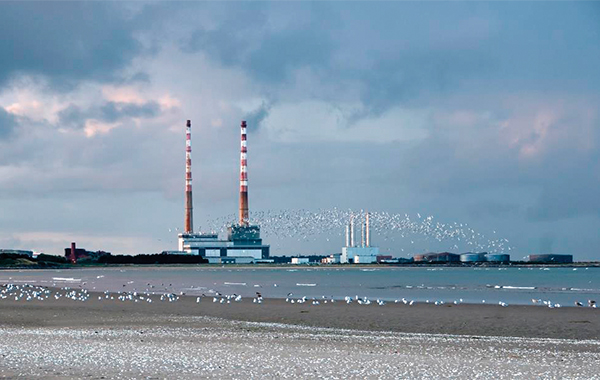
The coast of Dublin 4 could provide residents with a place to relax in the sun and enjoy the sea for bathing and sports activities.
The Dublin east coast region has not lost its love of the water and its beaches but unfortunately the public are sometimes warned not to go into the water due to pollution, and for the foreseeable future this could remain an ongoing thing. With the Ringsend Wastewater Treatment Plant experiencing problems due to running at over capacity there has been a temporary ban on bathing in these waters.
In August this year, due to rainfall, there was a temporary bathing prohibition put in place by Dublin City Council at Dollymount Strand, Sandymount Strand and Merrion Strand. and most recently Irish Water notified people ‘do not swim’ at these beaches, in addition to the ones at Shellybanks and Half-Moon, for a period between the 7th and 21st of November when they needed to discharge an overflow of preliminary treated wastewater into the sea while they needed to carry out some improvements at the plant.
A recent Irish Water statement declared:
“These works will improve the current performance of the plant and help meet the needs of the growing population. These are interim measures being undertaken in advance of Irish Water progressing with a project to seek planning permission to upgrade the Ringsend Wastewater Treatment Plant.”
Originally, the Ringsend Wastewater Treatment Works was under the responsibility of the Dublin City Council and in 2012 the Dublin City Council’s Ringsend WwTW Extension Project was approved by An Bord Pleanala. The project involved a long sea outfall tunnel 9km in length that was to be gravity fed and involved the tunnel being built into bedrock pushing effluent 24m below sea level. This tunnel did conflict with a special area of conservation site due for proposal but according to the Sandymount and Merrions Resident Association (SAMRA), the Minister of Arts, Heritage and the Gaeltacht failed to submit the site.
SAMRA’s request for the WwTW project to be quashed was rejected by the High Court that saw no diminishment of the level of the protection to the environment if the WwTW was to go ahead. Along with the tunnel the DCC had needed to apply for a Dumping At Sea permit for the rock spoil that would result from its construction. This permit was withdrawn, as requested by the Environmental Protection Agency, because it would need to go under public consultation before being approved. In 2014 Irish Water took over the Ringsend Wastewater Treatment Works and continued to subcontract the work to Celtic Anglican Water.
Ringsend WwTW was originally designed to treat wastewater for a capacity of 1.64 million population equivalent (PE) but is now operating over that capacity at 1.9 million PE. The latest project that will be submitted to An Bord Pleanala next year will use a new technology called Aerobic Granular Sludge (AGS). The technology is currently in use in a wastewater treatment plant in Garmerwolde, Netherlands, although this plant only caters for one tenth of what the Ringsend WwTW is dealing with at present.
Here is a breakdown of the technology from the Netherlands company, Nereda, who use this treatment:
There are granules/pellets of bacteria which sink in the tank cleaning the water 50 times faster than the traditional method. As the bacteria cling together, the bacteria living at different levels in the pellet do a variety of treatment tasks at the same time. This diversification is because the bacteria at the side are in an oxygen rich environment and the ones on the inside are starved. In this technology they happen in the same tank whereas before it needed a variety of tanks.
NewsFour spoke with Lorna Kelly from SAMRA on the continuing trouble of the Ringsend WwTW to which she replied:
“The Ringsend plant is overloaded at present. It’s a political problem and could be solved by giving sufficient infrastructure for the eastern and midlands region and it is a matter of urgency that this is done.”
Kelly is also curious about what happened with the Greater Dublin Drainage Scheme that was conceived ten years ago for a plant in Clonshaugh to take some of the burden away from the Ringsend plant. For the time being, while planning is being proposed, residents have to be careful and read notices at their beaches or on: http://splash.epa.ie for updates on their local sea water quality.
By Paul Carton



